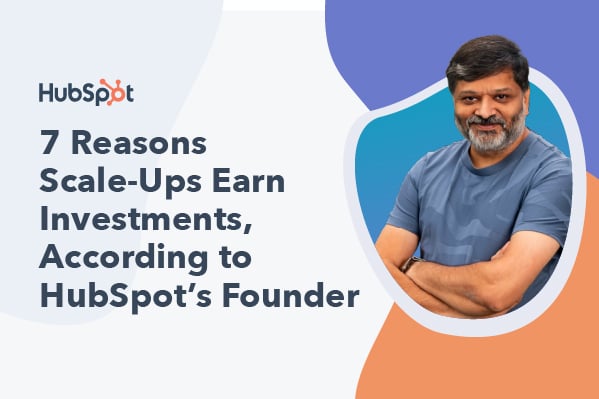Why do so many business strategies fail?
When you have the right business strategy or series of strategies in place working for you, it will have you screaming "I have the power" like He-Man.
But if everyone supposedly has a business strategy in place already, why are 65% of businesses still failing during the first ten years, according to the U.S. Bureau of Labor Statistics?
The culprit for most business strategies failing comes down to the 3 Cs: complexity, confusion, and complications.
They are slowed down by trying to implement complex processes. The roadmap, messaging, and foundation upon which the business strategy is built are confusing. The business can't act decisively because the strategy is overly complicated.
The three primary reasons your business strategy probably isn't working:
- It's undeniably not working for you, but you refuse to change it.
- No one understands it and therefore cannot execute it properly.
- You're doing a ton of tactics and calling it a "strategy" when it's not.
So now that we've addressed the elephant, how do we get rid of it?
Piece by piece.
There are three components necessary in creating a successful business strategy that can serve as our "short-division" hacks to growing our business: simple, sustainable, and scalable.
We will expand on how to incorporate these three components into developing business strategies that do work while also including episode references throughout from the Strategy Hacker's podcast iDigress, which is part of the HubSpot Podcast Network.
How to Create a Successful Business Strategy, According to the Strategy Hacker
1. Start simple.
The quickest route to success is a straight line. A straight line, in its purest form, is simple. We must embrace and integrate the power of simplicity within our business strategy.
An easy way to do this is by simplifying the structures, systems, and steps involved in creating and executing your strategy so that everyone can understand it.
For example, let's imagine your current process for determining how marketing is performing is by reviewing a series of reports. This takes a ton of time and energy, and the people who review the reports don't always understand the terms or references included in the report. To make matters worse — even after all of that, you still aren't sure about why things aren't working.
When you simplify and streamline your processes, the time it takes to understand, make decisions, identify weaknesses, amplify strengths, delegate tasks, and execute is significantly shorter.
By incorporating a higher level of simplicity within your business, things naturally become more effortless. Look at all the areas where the team spends the most time. Maybe you have friction points in using expensive, ineffective software or creating multiple reports that no one understands.

Instead of keeping things as is because "we've always done it this way" or "this process worked in the early days," allow yourself to get basic with everything.
Simplifications lead to making smarter decisions. Create S.M.A.R.T. (specific, measurable, achievable, relevant, and time-bound) goals using a unique set of criteria to ensure your objectives are attainable within a specific time frame.
Additionally, many business strategies don't work because business leaders haven't removed unnecessary roadblocks. These might include too many audience profiles, too much data, too much busy work that doesn't produce results, or too weak of a brand positioning.
When you remove complexity, confusion, complications, and clutter from the business equation, you're left with clarity. And that clarity can help you generate consistent business conversions.
Clarity is a powerful thing to have, but how do we align clarity into a solid business strategy? Below are a list of some episodes that can help:
- Ep 24: How to activate the power of strategy to achieve business success
- Ep 43: How to define your number to achieve your business goals this year
- Ep 37: How to build trust currency: a masterclass on increasing brand equity
- Ep 33: How to determine if you're the Tylenol or chocolate cake to your audience
2. Focus on sustainability.
The most efficient business strategies are the ones that don't just work today but continue to work tomorrow, next week, and even six months from now.
When you're developing and implementing a strategy, you can't set-it-and-forget-it. Strategy is a living and breathing system that requires constant evolution to continue to be effective. Create strategies with the end in mind.
The friction you typically hear from many businesses struggling to develop and enable true strategy is that they are always busy, and always in "go-mode." They would rather execute blindly out of the need to do something, instead of strategically planning out their moves — which leads to a higher chance of success.
Sometimes, it's not that your efforts won't work. It's understanding the bigger picture of what efforts are most essential to focus on right now to position yourself for true sustainability first, and then scaling second.
You can't scale if you aren't stable, and some business leaders' full of zeal forget that.
When was the last time you looked at your customer journey through the eyes of your ideal customer? Is your journey optimized and systemized to give the right value at every stage? Are your marketing, branding, SEO, and selling initiatives in alignment with where you are in your business right now?

Some businesses' customer journeys and initiatives are stuck on awareness mode when they need to switch to sales, acquisition, and conversions mode. So which mode are you? Ep 34 of iDigress shares a 5-point customer journey blueprint that can be modified to fit your current business situation and address all of these questions:
- Awareness
- Interest/Attention
- Conversions
- Relationship Building
- Advocacy
Sustainability requires a certain mindset and level of tenacity accompanied by patience, poise, and persistence.
3. Ensure your strategy is scalable.
Consistency is key for sustainability, but in order to scale one must be willing to fail. Unlike sustainability, scalability requires a different focus, and a little more risk tolerance.
When you're evolving your business strategy to pursue next-level growth, your mindset has to expand to see infinite possibilities.
You will need to identify, isolate, and innovate. For instance, you'll want to:
- Identify your ideal customer profile, what's working, and what's not working
- Isolate the best opportunity for next-level growth
- Innovate your offerings to meet the additional needs of the consumer
The business strategies that generate the most money and continue to work are designed as living, breathing plans of action that can be expanded to handle high-level growth and capacity.
In order for your business to scale effectively, you must have a clear path on what you need to do to make that leap in growth. Ep 48 of iDigress reflected on the four lessons Kieran Flanagan, SVP of Marketing at HubSpot, attributes to HubSpot reaching one billion in ARR and the business, marketing, and mental approach necessary to start achieving disruptive growth in your specific marketplace.
Scaling business growth is all about leveraging strategies that can scale to generate consistent revenue growth without adding a ton of extra costs. This keeps your profit margins high.
Any campaign, business, or movement that scaled quickly in a very sustainable way probably…
- was easy to identify, understand, and share
- was attractive to the eyes, heart, and soul
- was so social it transcended audiences, countries, and languages
- was there at the right time, and used the right platform and distribution methods
One way to improve your odds of scaling astronomically, which we discuss in Ep 44 of iDigress, is by embracing the E.A.S.T. framework with your efforts. Here's how it works:
- Step 1. Make it Easy
- Step 2. Make it Attractive
- Step 3. Make it Social
- Step 4. Make it Timely
Applying E.A.S.T. may seem very simple in scope. However, many still fail to implement this framework successfully when it comes to marketing, branding, sales, and communication.
Strategy serves as the pen and paper to create the story you want for your business.
With strategy, you can map out the business you want to build, remove anything you don't like, and add anything that you desire to create the organization you want. But it's not instantaneous. It takes time. Yes — even with "short-division" hacks.
It all builds on top of each other. Simplicity lays the foundation for sustainability, which lays the runway for scalability — and, all the while, you can use strategy as your guiding light to help you navigate as you continue to level up.
Business Growth
.png?width=112&height=112&name=Image%20Hackathon%20%E2%80%93%20Horizontal%20(59).png)











